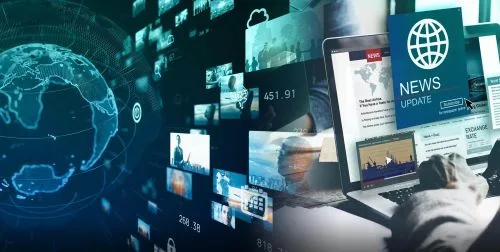With seemingly the worst of COVID-19 behind us, business leaders around the globe are breathing a sigh of relief. But we all know that we can’t remain complacent. There’s no question that a new pandemic or epidemic will strike eventually. The only question is – which one will strike first?
Without a crystal ball, it’s impossible to know for sure whether your next opponent will be a pandemic or epidemic. But there are plenty of signals your enterprise should be tracking – signals that can provide you with important foresight about the next crisis.
Why take the time to track approaching pandemics or epidemics? COVID-19 reminded us that a public health crisis can create severe setbacks or lead to bankruptcy for any enterprise, large or small. Understanding the enemy and tracking its movements is the best way to avoid being blindsided.
Epidemics And Pandemics: What’s The Difference?
The words “epidemic” and “pandemic” are often used interchangeably. But they’re different for a reason.
What is a pandemic?
A pandemic is a disease outbreak that occurs over a wide geographic area, often worldwide.. When one strikes, it affects an exceptionally high proportion of the global population. Pandemics transcend borders, political lines and continents. Since our globe is so interconnected, pandemics can spread very quickly. A look back at the COVID-19 timeline confirms this:
- The very first reports of a novel virus came at the very end of December 2019.
- By January 21, 2020, the WHO conducted its first mission to Wuhan, China to learn more about the cluster of cases.
- By January 24, three novel cases were reported in France.
- By March 11, the WHO had classified COVID-19 as a pandemic.
Pandemics bring disaster in their wake. They’re capable of causing significant amounts of severe disease, mortality and societal disruption.
What is an epidemic?
The term “epidemic” refers to the rapid spread of a disease within a specific community, region or population. Compared to pandemics, epidemics have a more localized scope. But this doesn’t mean they can’t wreak havoc. SARS (severe acute respiratory syndrome) is an example of a destructive epidemic in recent memory. In 2003, SARS claimed the lives of over 800 people. In areas of the globe that never saw a SARS outbreak, panic and uncertainty still reigned.
What Are The Factors That Drive Pandemics and Epidemics?
Multiple contributing issues influence the likelihood and severity of the next pandemic or epidemic. Consider these factors that drive both:
Globalization and Travel
In many ways, globalization has turned the entire planet into a village. In only 45 hours, a commercial plane can travel the entire circumference of the globe. As international travel and trade increases, so does the risk of both pandemics and epidemics. Communication and transportation are advancing exponentially, furthering the world’s economic and social globalization. While globalization can give your enterprise a worldwide reach, it also makes public health disease containment much more challenging.

Urbanization
As densely populated areas become the norm worldwide, the risk of epidemics and pandemics is exacerbated. Over half the world’s population now lives in towns and cities – and by 2030, the number of urban dwellers is expected to reach 5 billion.
Zoonotic Diseases
When a novel infectious disease arises in humans, it often originated in animals first. Such a disease is called a zoonosis. Unfortunately, due to human activities like deforestation and building at the urban/wild interface, these zoonotic diseases are only expected to become more common. As we continue to encroach on animals’ natural habitats, and as climate change disrupts them, more germs jump from animals to man.
Antibiotic Resistance
Before the discovery of antibiotics, human life expectancy was around 47 years. Even in the most industrialized communities, infectious diseases routinely caused death before middle age. Antibiotic develoopment dramatically extended life expectancy in the 20th century. The misuse and overuse of antibiotics, however, have led to the rise of antibiotic-resistant bacteria. These “superbugs” are harder to treat, and mortality rises from them. Antibiotic resistance doesn’t cause epidemics or pandemics, but it makes ones caused by superbugs harder to control, more severe, and deadlier.
Climate Change
As the climate changes rapidly, disease vectors like mosquitoes and ticks are becoming more prevalent. These tiny insects are responsible for spreading dangerous illnesses including:
- Malaria
- Dengue fever
- Lyme disease
And as the planet warms, these diseases will increasingly become a global problem, no longer confined to tropical or subtropical regions.
Vaccine Hesitancy
Vaccines have proven to be one of the most effective tools against infectious diseases in human history. Despite saving countless lives, vaccines are facing a PR problem due to misinformation. Around the world, vaccine hesitancy poses a significant threat to public health – and since the COVID-19 pandemic, it’s been steadily rising. In fact, during the COVID-19 pandemic, trust in childhood vaccines dropped by up to 44 percentage points in multiple countries. Studies have shown higher COVID mortality in regions with lower vaccine uptake. Misinformation and distrust in vaccines hinder global vaccination efforts, causing preventable diseases to spiral into epidemics or pandemics.

Protecting Your Enterprise From Biosecurity Threats
The current situation is sobering, but not hopeless. With early detection and surveillance, investment in global healthcare infrastructure, and collaboration among key players worldwide, pandemics and epidemics can be confronted head on.
For enterprise, many of the needed preparatory steps are the same, whether a pandemic or an epidemic arises first. Investment now in epidemic/pandemic planning will pay large dividends in the years ahead and provide competitive advantage.
Need actionable insights to help you protect your assets and team members?
The Global Threat Tracker is the newest part of the PHC Pharos platform. It enables your enterprise to understand biosecurity risks and respond early. You can track one location or all of your locations using filters for COVID-19, RSV, influenza and other risks.
Watch our demo to learn more about the Global Threat Tracker.



